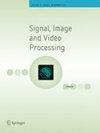SIGAA:信号自动分析:一个新的工具,为Ca2+信号定量使用比例的Ca2+染料
IF 2.1
4区 计算机科学
Q3 ENGINEERING, ELECTRICAL & ELECTRONIC
引用次数: 0
摘要
星形胶质细胞是一种非神经细胞,仅限于大脑和脊髓,其功能和形态取决于其位置。星形胶质细胞与星形胶质细胞之间以及星形胶质细胞与神经元之间的相互作用通过细胞质ca2 +水平的变化发生,这些变化被评估以确定细胞功能和反应(即药物测试)。细胞内ca2 +水平变化的评估主要依赖于荧光成像技术,通过用ca2 +敏感染料孵育的细胞的视频记录来完成。通过观察离子浓度随时间的变化在一个划定的兴趣区域(ROI)包括单个细胞,有可能得出细胞对特定刺激的反应的结论。我们的工作描述了一个名为SIGAA -信号自动分析的工具,用于星形胶质细胞基于roi的荧光成像。该工具是专门为两个波长激发染料量身定制的,通过使用Ca 2+信号的两个输入记录帧/视频,并输出一组与实验结论和细胞表征相关的特征。SIGAA使用模板匹配算法对两个录制的视频进行自动漂移校正,然后使用形态学重建技术进行星形胶质细胞识别(ROI)。随后,SIGAA提取所有已识别roi的细胞内ca2 +进化函数,检测功能瞬态,并估计每个信号的一组特征。这些特征与迄今为止使用的传统方法和软件所获得的特征非常相似。SIGAA是一种全新的全自动工具,它可以将长达一小时的研究和分析缩短到几分钟,并显示出效度测试所表明的可靠结果。本文章由计算机程序翻译,如有差异,请以英文原文为准。
SIGAA: signaling automated analysis: a new tool for Ca2+ signaling quantification using ratiometric Ca2+ dyes
Abstract Astrocytes are non-neural cells, restricted to the brain and spinal cord, whose functions and morphology depend on their location. Astrocyte–astrocyte and astrocyte–neuron interactions occur through cytoplasmic Ca 2+ level changes that are assessed to determine cell function and response (i.e., drug testing). The evaluation of alterations in intracellular Ca 2+ levels primarily relies on fluorescence imaging techniques, performed through video recording of cells incubated with Ca 2+ -sensitive dyes. By observing ion concentration shifts over time in a delimited region of interest (ROI) encompassing a single cell, it is possible to draw conclusions on cell responses to specific stimuli. Our work describes a tool named SIGAA — signaling automated analysis , for astrocyte ROI-based fluorescent imaging. This tool is specifically tailored for two wavelengths excited dyes by using two inputs of Ca 2+ signaling recorded frames/videos and outputting a set of features relevant to the experiment’s conclusions and cell characterization. SIGAA performs automatic drift correction for the two recorded videos with a template matching algorithm, followed by astrocyte identification (ROI) using morphological reconstruction techniques. Subsequently, SIGAA extracts intracellular Ca 2+ evolution functions for all identified ROIs detects function transients, and estimates a set of features for each signal. These features closely resemble those obtained through traditional methods and software used thus far. SIGAA is a new fully automated tool, which can speed up hour-long studies and analysis to a few minutes, showing reliable results as the validity tests indicate.
求助全文
通过发布文献求助,成功后即可免费获取论文全文。
去求助
来源期刊

Signal Image and Video Processing
ENGINEERING, ELECTRICAL & ELECTRONIC-IMAGING SCIENCE & PHOTOGRAPHIC TECHNOLOGY
CiteScore
3.80
自引率
8.70%
发文量
328
审稿时长
6 months
期刊介绍:
The journal is an interdisciplinary journal presenting the theory and practice of signal, image and video processing. It aims at:
- Disseminating high level research results and engineering developments to all signal, image or video processing researchers and research groups.
- Presenting practical solutions for the current signal, image and video processing problems in Engineering and Science.
Subject areas covered by the journal include but are not limited to:
Adaptive processing – biomedical signal processing – multimedia signal processing – communication signal processing – non-linear signal processing – array processing – statistics and statistical signal processing – modeling – filtering – data science – graph signal processing – multi-resolution signal analysis and wavelets – segmentation – coding – restoration – enhancement – storage and retrieval – colour and multi-spectral processing – scanning – displaying – printing – interpolation – image processing - video processing-motion detection and estimation – stereoscopic processing – image and video coding.
 求助内容:
求助内容: 应助结果提醒方式:
应助结果提醒方式:


